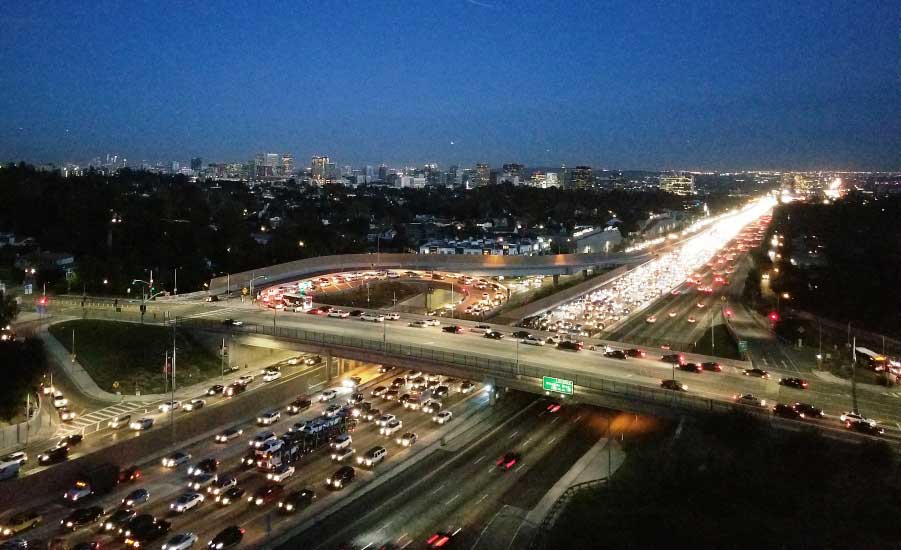The Los Angeles County Metropolitan Transportation Authority (Metro) recently released four refined concepts for the visionary Sepulveda Transit Corridor Project, a plan that aims to build a fast, high-capacity transit line between the San Fernando Valley and the Westside and eventually Los Angeles International Airport (LAX) through the Sepulveda Pass. The project would connect to existing Orange, Purple and Expo lines.
Three of the four concepts are heavy rail and the other is a monorail.
Metro says the project is necessary because travelers have only one option to get between the Valley and the Westside. The natural barrier created by the Santa Monica Mountains means that most people traveling between these areas are funneled primarily onto the I-405 Freeway, already ranked as one of the most traveled urban highways in the nation. More than 400,000 people travel through this area every day to commute to work, school, and other destinations along the freeway and beyond.
Metro is conducting a feasibility study to identify and evaluate the high-capacity rail transit alternatives between the two areas, including connections to existing and planned Metro bus and rail lines. A number of alignments and station locations will be considered for the various rail alternatives. The study is expected to complete this fall. Its findings will be the basis for future environmental analysis and project refinement. The feasibility study is being led by Sepulveda Mobility Partners, a joint venture of HNTB Corporation and WSP USA, Inc.
The roughly 20-mile-long project study area is broken into two parts. This first phase is the Valley to the Westside and the second phase is the Westside to LAX. The three heavy rail concepts would be mostly tunnels cutting through the Santa Monica Mountains.
The first two heavy rail concepts would run entirely underground between Van Nuys and the Westside, near Westwood and UCLA College, traveling beneath the 101 Freeway. Metro says each concept would see about 120,000 daily riders for the 15-minute trip. Officials say the main construction challenges of these two options would be tunneling under East San Fernando Valley, and dealing with major water mainlines and storm drains.
The third heavy rail concept features both tunneling and an above ground aerial section. The tunnel portion would begin near Westwood and UCLA College and then heading north the line would switch to an aerial track just before Ventura Blvd. and the 101 Freeway in Sherman Oaks, culminating in Van Nuys. The main challenges for this concept are working with property owners for the aerial section, as well as dealing with major water mainlines and storm drains.
The monorail concept would run similar to the third concept, running between Westwood / UCLA College and Van Nuys. The idea would at times run along the median of the 405 Freeway. The monorail concept wouldn’t need as much tunneling (which is expensive) as the three heavy rail concepts, but a monorail would be slower and has lower ridership estimates than the other concepts. Challenges include working around wildlife crossings and streams in the Sepulveda Pass, property owner impacts, and major water mainlines and storm drains.
The Sepulveda Transit Corridor is part of the Measure M expenditure plan, with approximately $5.7 billion for new transit service to connect the San Fernando Valley and the Westside, scheduled to open by 2035. Approximately $3.8 billion is allocated to extend that service from the Westside to LAX with a 2057 opening date.
Under Measure M, the second phase of the Sepulveda project between the Expo Line and LAX is not due to break ground until 2048. Metro says it is studying initial concepts for that segment to ensure that the first phase is built in such a way that it can continue south.


Post a comment to this article
Report Abusive Comment